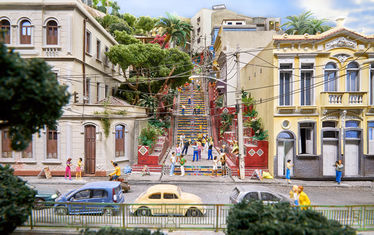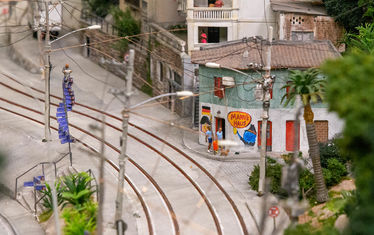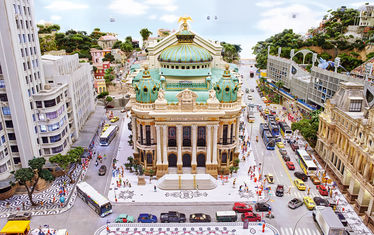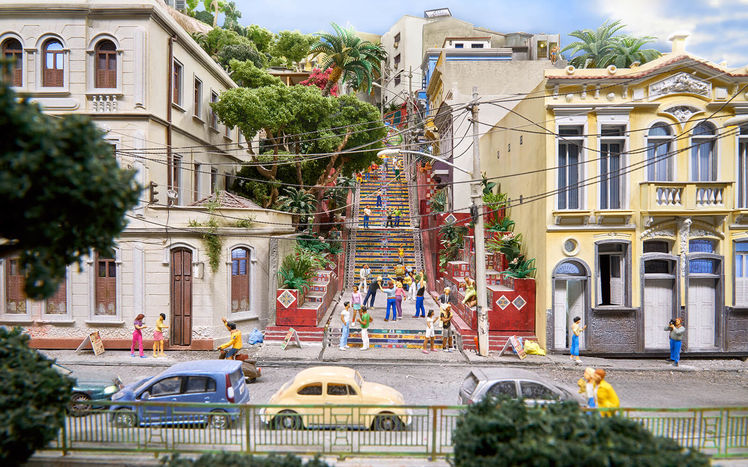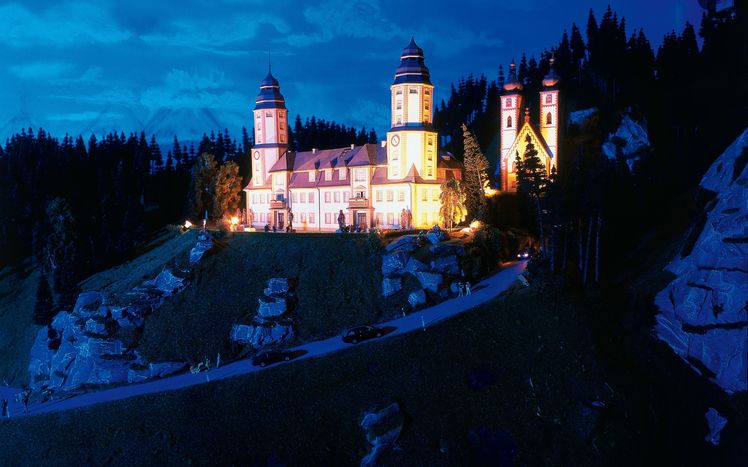Santa Teresa
As if from a bygone era, the hilly district of Santa Teresa with its old residential houses appears. Historic streetcars crisscross this part of Rio de Janeiro and a colorful staircase is considered the landmark of the villa district.
The colorful steps of the staircase "Escadaria Selarón" were decorated by Chilean artist Jorge Selarón, it connects the neighborhoods of Lapa and Santa Teresa. The idea came to the artist during a simple renovation of some steps near his home.
As in reality, the small wonderlanders quickly discovered the work of art made of hundreds of small mosaics as a popular photo motif for themselves.
At the highest point of the neighborhood is the Parque das Ruínas. Among rustic vegetation lies the public park, at whose restored ruins concerts and events are held regularly. One of three cable cars in Rio de Janeiro runs horizontally from Santa Teresa to the station at the favelas.
The yellow streetcars of Santa Teresa are the oldest electric streetcars in all of Latin America, they have been running through the narrow streets since 1896. For the production of the trams, several work steps were necessary in Miniatur Wunderland. A chassis of an existing train was adapted so that a 3D-drawn and printed superstructure could be attached to it. Several layers of paint then gave the train its typical yellow appearance and, of course, passengers were not to be missed either.
The city's theater, the Theatro Munipipal, is truly grandiose. The magnificent building in the middle of the bustling city center is surrounded by Rio de Janeiro's main train station and the Museu Nacional de Belas Artes. The Sambodromo is also just a street crossing away, so it's no wonder that some lavish costumes can be found in the streets here as well.
